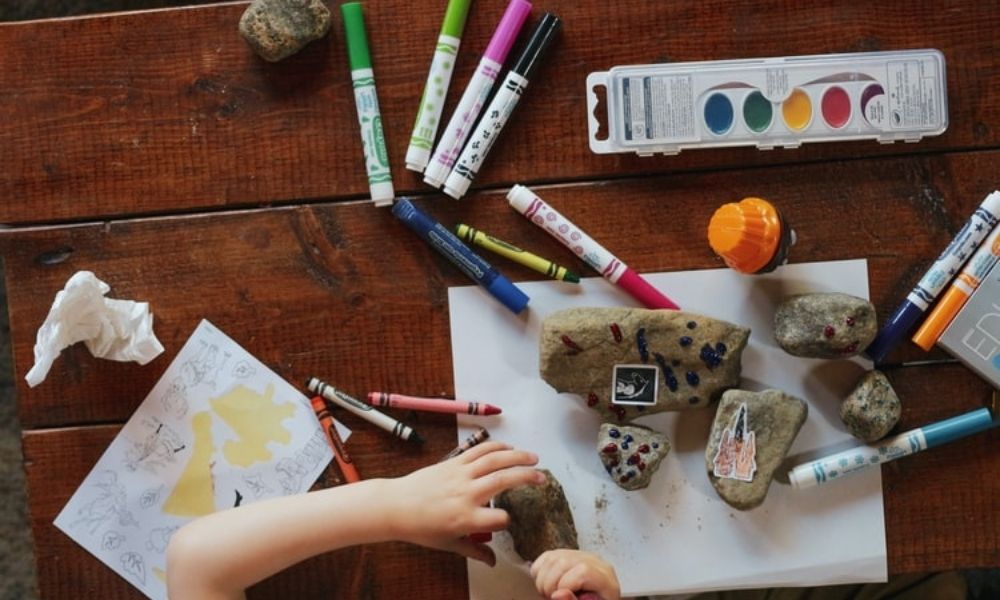
Credits: Unsplash
Creativity Makes Way For Mental Well-Being
India, 11 July 2021 5:22 AM GMT | Updated 11 July 2021 5:56 AM GMT
Editor : Ankita Singh |
A literature lover who likes delving deeper into a wide range of societal issues and expresses her opinions about the same. Keeps looking for best-read recommendations while enjoying her coffee and tea.
Creatives : Ratika Rana
Her primary objective is to inform, promote, educate and cultivate readers through writing.
A 2010 IBM study of 1500 global CEOs noted that organisations that successfully navigated change with more innovation were those with creative leaders.
A study conducted for the National Care of Mental Health suggested that at least 6.5 per cent of the Indian population has some mental disorder. Mental health has been a much talked about topic on all social media platforms since the pandemic began.
The onset of the pandemic and the impositions of national and subsequent state lockdowns made stepping out of homes or interacting with several people a rarity. When isolation became the need of the hour, some took advantage and spent time with their families, others learnt new hobbies, binge-watched Netflix, and some found it exhausting to stay locked up without any family or friends around. In such testing times, when adults couldn't cope with such varying circumstances, the impact on young children is expected to be far worse.
Children and mental health
The inability of going outdoors to play has scientifically proven to be catastrophic for children in their growing years. To top that, now schools and tuitions have also gone digital, further limiting the scope of growth by practical experience. The pandemic had left young children, and their parents glued to screens. In such a scenario when children did not have their friends to share their everyday problems with, their mental health was taking a backseat.
Sadly, amid all the chaos and their inability to express their emotions freely, the issue went unnoticed. Child Psychologist and Parenting Consultant Dr Debmita Dutta said that in any age group, 'being listened to' matters a lot. Youngsters, especially adolescents, have felt the loss of personal space. She also mentioned, "We all have become very critical, and we only try to find faults in our children and family members."
Due to the pandemic, children have lost the opportunity to engage with creative activities like clay moulding, art, origami, etc. These activities are taught in pre-primary classes and help the child to explore their creative side independently.
Young children have a lot of energy inside, and the parents cannot identify it. Dr Dutta added, "Children become cranky, and we think they are annoying, but they are not. They are in severe discomfort, and for this, children need to go out and play. They need to spend their energy. Otherwise, the energy that is bottled up inside becomes very toxic for them." When asked about how can parents connect better with their children, Dr Dutta said that guardians or parents could involve in activities like dancing, which would be an exercise for the child and would enhance the bond between the two.
Creativity To The Rescue
Creativity does not only involve your mind; it improves one's overall well-being. Engaging in the simplest activities like singing, dancing, or colouring enhances brain function, mental and physical health. Heather L. Stuckey and Jeremy Nobel said in their article The Connection Between Art, Healing and Public Health that, "Art helps people express experiences that are too difficult to put into words, such as diagnosis of cancer. Artistic self-expression might contribute to the maintenance and reconstruction of a positive identity." When you succeed in creating something, through any form, your brain releases dopamine, a feel-good hormone that makes you feel positive.
How Does Creativity Help?
Apart from releasing positive and happy hormones in the body, creativity also helps treat patients with dementia. It benefits in reducing depression and isolation and helps dementia patients sharpen their senses and tap into their personalities. An average person has nearly 60,000 thoughts in a day. A creative activity like knitting or cooking helps channel thoughts in one direction and has often been compared to meditation. Simple activities release dopamine, which is a natural anti-depressant.
Apart from reducing stress, anxiety and depression, engaging in creative tasks help an individual to better process trauma. Writing, for instance, has several long and short-term benefits. It helps channel their thoughts expressively, or painting allows people to express things they find difficult to put into words. Creativity also helps in making people bright. If a person plays an instrument, it improves the functioning between their left and right brain. The left part of the brain is responsible for motor functions, while the right side responds better to the melody. When both things happen simultaneously, it improves the balance between both sides of the brain.
Organisations That Provide Art Therapy
A 2010 IBM study of 1500 global CEOs noted that organisations that successfully navigated change with more innovation were those with creative leaders. However, even after existing in the 21st century, reaching out for psychotherapy or mental health issues is still taboo in Indian society. There are scores of students taking up a career in psychology and are aware of youngsters' deteriorating mental health crisis in India. Organisations like The Art Outreach Society, Anantaraa Arts-based Therapy and Sankalpa are among few Indian organisations that emphasise mental health by using art.
In an initiative by the General Education Department of Kerala's Ernakulam district, schools organise creative sessions virtually and push children to perform simple tasks at home to help them ease mental stress. The teachers are directed to hold interactive sessions outside the confines of the academic schedule and get to know the problems faced by children given the pandemic. Families need to be more accepting of the flaws of their kin. Online reunions, playing virtual games and having in-house recreational parties can be standard ways to help people know each other better.
Involving a family member in a creative activity strengthens the bond and encourages healthy competition and admiration. Most importantly, it is high time that we let go of the age-old belief that crying makes one look weak; instead, we should learn to accept personal fallacies and be considerate towards the emotions of those around us.
The brain reacts to creative activities with the same enthusiasm for activities like meditation and yoga. Such practices should make a part of the routine to generate the feeling of calmness and positivity. Like these activities, creativity makes a person feel a natural 'high' and releases a sense of joy and contentment.
Also Read: Transgender Women Making It Big In The World Of Beauty Pageants
 All section
All section














